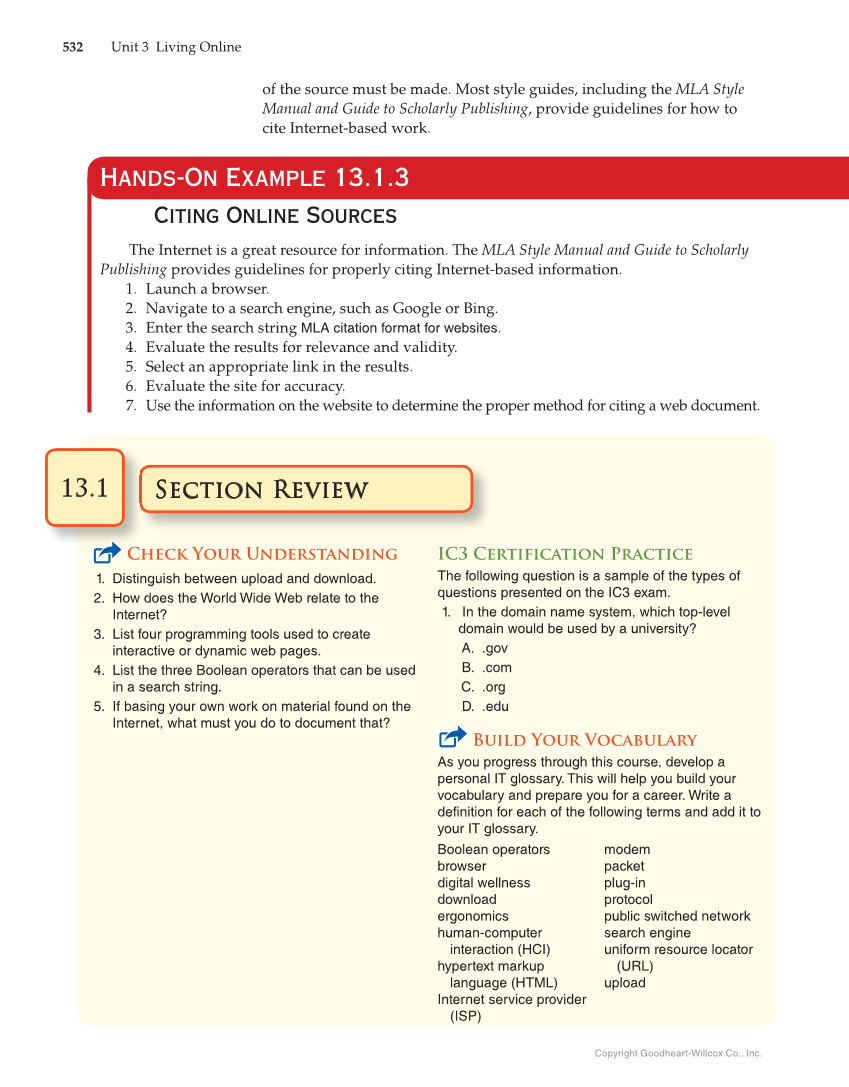Copyright Goodheart-Willcox Co., Inc. 532 Unit 3 Living Online of the source must be made. Most style guides, including the MLA Style Manual and Guide to Scholarly Publishing, provide guidelines for how to cite Internet-based work. Hands-On Example 13.1.3 Citing Online Sources The Internet is a great resource for information. The MLA Style Manual and Guide to Scholarly Publishing provides guidelines for properly citing Internet-based information. 1. Launch a browser. 2. Navigate to a search engine, such as Google or Bing. 3. Enter the search string MLA citation format for websites. 4. Evaluate the results for relevance and validity. 5. Select an appropriate link in the results. 6. Evaluate the site for accuracy. 7. Use the information on the website to determine the proper method for citing a web document. Section Review Section Review 13.1 Check Your Understanding 1. Distinguish between upload and download. 2. How does the World Wide Web relate to the Internet? 3. List four programming tools used to create interactive or dynamic web pages. 4. List the three Boolean operators that can be used in a search string. 5. If basing your own work on material found on the Internet, what must you do to document that? IC3 Certification Practice The following question is a sample of the types of questions presented on the IC3 exam. 1. In the domain name system, which top-level domain would be used by a university? A. .gov B. .com C. .org D. .edu Build Your Vocabulary As you progress through this course, develop a personal IT glossary. This will help you build your vocabulary and prepare you for a career. Write a definition for each of the following terms and add it to your IT glossary. Boolean operators browser digital wellness download ergonomics human-computer interaction (HCI) hypertext markup language (HTML) Internet service provider (ISP) modem packet plug-in protocol public switched network search engine uniform resource locator (URL) upload
